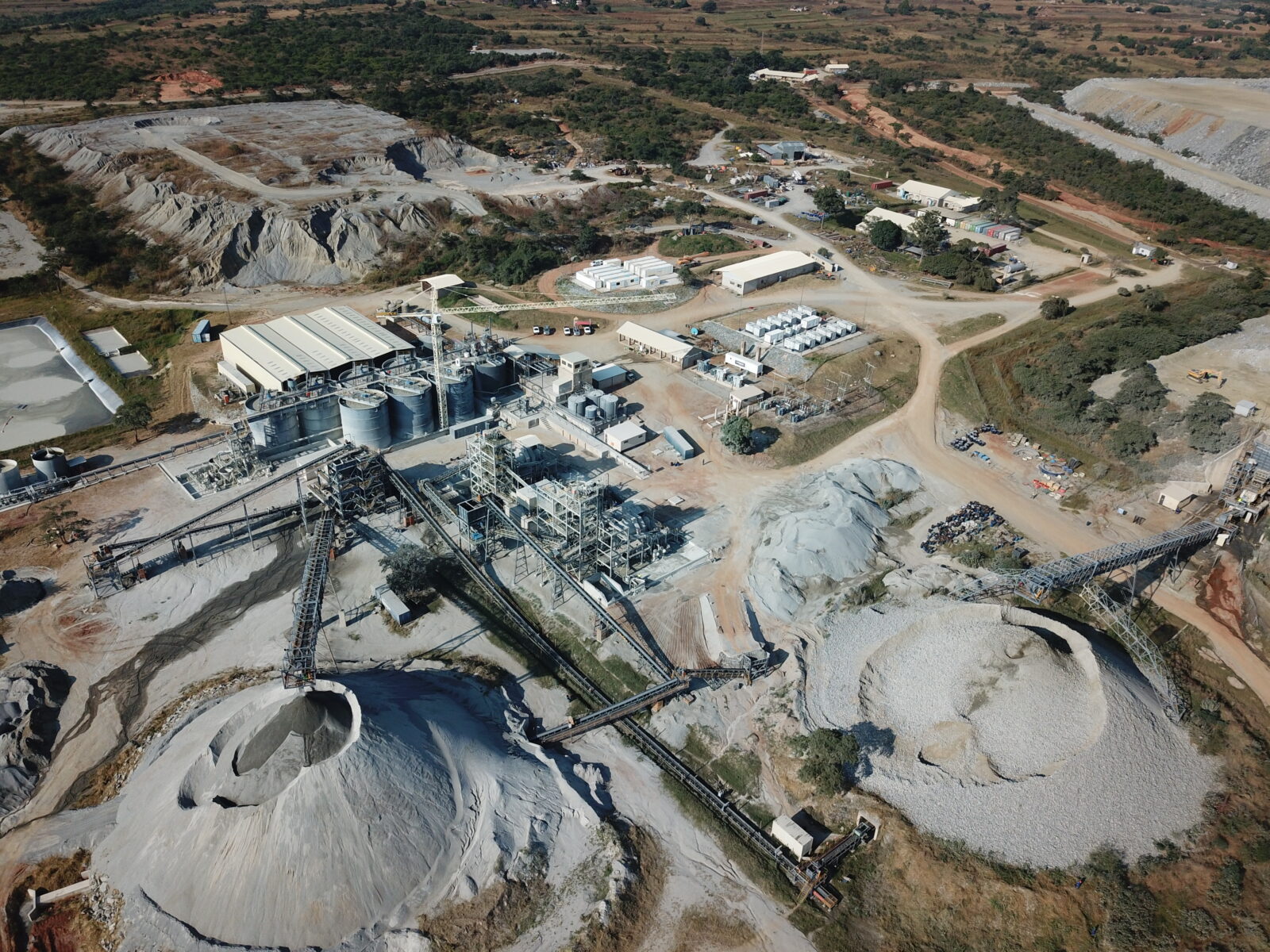Mining in Zimbabwe, 5 years later (mining industry recap)

The mining sector in Zimbabwe has demonstrated steady growth since the appointment of Hon Winston Chitando as the Minister of Mines and Mining Development in November 2017 after the fall of the Robert Mugabe administration. Despite some visible challenges and setbacks, the industry’s overall progress has been remarkable.
Rudairo Mapuranga
In 2017, the mining sector’s contribution to the gross domestic product was about 9 per cent, and the figure rose to over 13 per cent in 2022.
The Mining sector achieved more than 100 per cent growth in earnings under President Emmerson Mnangagwa’s administration, evidenced by the massive jump in mineral exports to US$5,62 billion realised in 2022 when compared to about US$2,7 billion in 2017.
Official Government figures show the mining industry alone has attracted more than US$6 billion in new projects in the last four years, with a corresponding increase in output, export earnings, and massive job creation impact along the value chain.
The Emmerson Mnangagwa administration has worked tirelessly since taking office to revitalize the country’s mining sector. Despite facing numerous challenges, the government has implemented several commendable initiatives to develop the industry and attract investment. Here are ten things the Mnangagwa administration has done right in Zimbabwe mining and outstanding issues that need urgent reforms:
1) Mining Law Reforms
The government introduced comprehensive reforms in Zimbabwe’s mining laws to attract foreign investors and enhance transparency. The country opened up to doing business by scrapping the indigenisation and economic act which restricted heavily foreign capital in the country. Since the inception of the Mnangagwa administration, various world-class mining projects have been established including the Eureka Gold Mine project and processing plant, the Arcadia lithium project and processing plant, Sabi Star lithium project and processing plant among other projects. However, it should be noted that the sector has failed to reach deadlines for other legislative reforms which include the Mines and Minerals Amendment bill, and the Precious Stones Amendment bill, among others which are aimed at streamlining mining operations and reducing bureaucracy.
2) Investment Policies
The government has created a conducive investment environment by implementing policies that facilitate foreign direct investment (FDI). These policies include guarantees of property rights for investors and the relaxation of indigenization laws, allowing foreigners to hold controlling stakes in mining operations. Mining companies like Zimplats, Unki, Mimosa, and Caledonia have praised the government for allowing them to hold a controlling stake leading them to invest in mining growth and development. Zimplats has signed a Memorandum of Understanding with the government which will see the company investing US$1.8 billion for its expansion projects with over USD 0.5 billion already invested.
3) Exploration Support and Geological Data Availability
Access to accurate geological data is vital for attracting investment and developing the mining sector. The administration has committed significant resources to promote geological exploration. The government initiated the Geo-Data Information System, which consolidates all geological data to aid mining companies in making informed decisions about resource exploration and development. However, the government has not adequately invested in geological surveys or made the data easily accessible to potential investors.
4) Mining Infrastructure Development
The government has prioritized the development of critical infrastructure to support mining operations. This includes investing in road networks, power generation, railways, and water supply systems to ease transportation and reduce production costs. There is an improved power supply which has put on hold the gruelling power disruptions which have been engulfing the country for the first six months. Through the State of Mining Industry Survey Report of 2022, mining industry captains believe that the sector will grow significantly in 2023 but will be affected by power outages.
5) Engaging Stakeholders
The Mnangagwa administration has supported platforms for regular dialogue with mining industry stakeholders. These engagements have led to effective collaboration between the government, mining companies, communities, and civil society organizations, ensuring that all parties’ concerns are addressed. Examples of such gatherings include the Annual General Conference for the Chamber of Mines, the President and Mines Minister are also a permanent feature at Mine Entra every year. The Minister of Mines and Mining Development has also created a miners’ desk where he receives reports from Miners both large and small weeks through their respective Associations. The Ministry is also consistently in touch with Media Houses via some social media platforms, ensuring mining developments are made public. However, Mining has taken centre stage in Zimbabwe which has led to other voices in the industry advocating having the Mines Minister host regular independent press briefings once every week and answer questions related to the industry.
6) Initiatives for Responsible Mining
The government has introduced measures to promote responsible mining practices and sustainable development. This includes enforcing environmental protection laws, monitoring compliance with safety regulations, and promoting corporate social responsibility (CSR) initiatives to benefit local communities. However, the administration has not provided sufficient support and regulatory frameworks to promote responsible and sustainable artisanal and small-scale mining. This has resulted in informal mining practices, safety hazards, and a lack of fair working conditions for miners, increasing mine accidents.
7) Fostering Public-Private Partnerships
The administration has actively pursued partnerships with both local and international mining companies to accelerate investment in the sector. By partnering with the private sector, the government aims to take advantage of their resources, expertise, and technology to maximize the sector’s potential. The government has successful partnerships with various investors to form Kuvimba Mining House (KMH) which has been renewing some of the country’s biggest Mines which include Shamva Gold Mine and the newly discovered Sandawana Lithium.
8) Simplified Licensing Process
The government has simplified the process of obtaining mining licenses and permits. By reducing red tape and bureaucracy, this initiative has encouraged both local and foreign investors to initiate mining projects promptly, promoting economic growth and job creation. However, the small-scale miners in highly mineralised provinces e.g. Mashwest, Midlands have instructed the Portfolio Committee on Mines to craft a law that mandates the Ministry to ensure titles are out within 90 days.
9) Supporting Artisanal and Small-Scale Mining (ASM)
The administration recognizes the importance of the ASM sector in Zimbabwe’s mining industry. It has instituted programmes to formalize ASM operations, provide training, access to capital, and support services to empower small-scale miners, contributing to poverty alleviation and economic empowerment. The Zimbabwe Miners Federation (ZMF), a body representing artisanal and small-scale miners, regularly sits with the Minister of Mines and Mining Development to report on matters of concern in the industry. The ASM has been growing significantly accounting for over 67 per cent of gold deliveries to the country’s sole buyer and exporter Fidelity Gold Refinery (FGR). SSMiners have also lamented “exclusion” from key sectors like lithium.
10) Promoting Mineral Value Addition
The government has placed a strong emphasis on value addition and beneficiation of minerals. This involves encouraging mining companies to process minerals locally rather than exporting only raw materials, aiming to increase job opportunities, revenue generation, and industrial development. Recently the country commissioned the biggest hard rock lithium processing plant in Africa at Arcadia lithium mine with plans to establish lithium carbonates processing plant underway. In the Platinum Group of Metals (PMG) sector, plans to set up a smelter are underway. The establishment of Africa’s biggest iron and steel plant is also underway in Manhize where Dinson Iron and Steel Company (Disco) is establishing a world-class Iron and steel plant.
The Mnangagwa administration’s efforts towards revitalizing Zimbabwe’s mining sector are commendable. There are almost zero complaints from ASM on late gold payments and Large scale mines’ gold can now apply to export their gold.
These initiatives have attracted significant FDI, promoted responsible mining practices, empowered local communities, and enhanced the country’s overall economic development. Despite the challenges ahead, these accomplishments demonstrate the commitment of the government to leverage the mining sector’s potential to uplift the lives of ordinary Zimbabweans.


